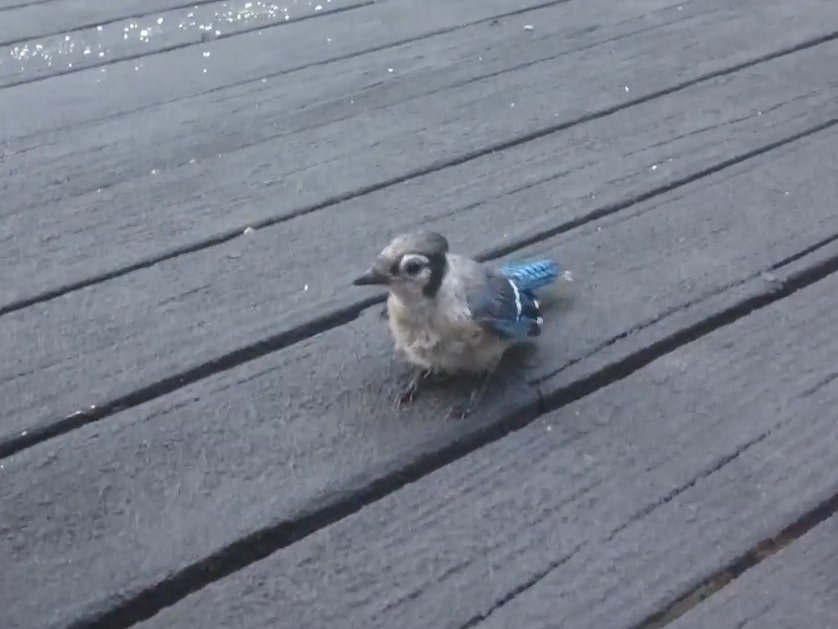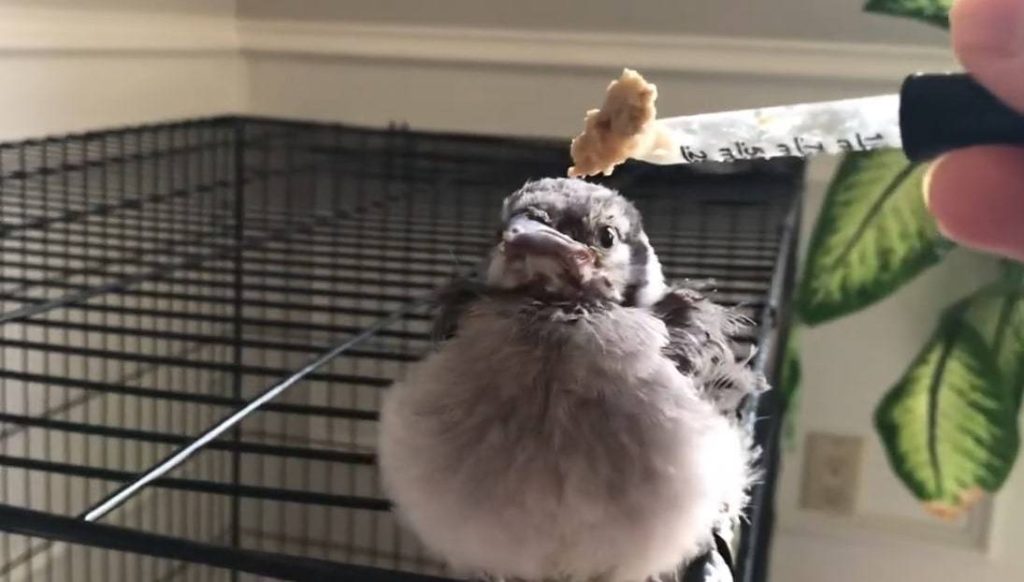Blue jays are birds from the Corvidae family, from which some common birds like crows and magpies come.
As adults, they are sassy and boisterous. But as babies, they are super cute and fragile. They make for a very heartwarming sight. This is why I am always surprised that they grow up to become such menaces.
In this expose, I will be telling you all you need to know about baby blue jays, how to take care of them, what to feed them, and the peculiarities that they exhibit while they fledge and mature into the small beauties they become.
What Does Baby Blue Jay Look Like?

Yes, I said it: baby birds are ugly.
I usually need a day or two to get used to them enough to not get repulsed after I witness their birth or come across them in a nest or wherever.
More than any feeling of repulsion, though, I always feel the need to take care of them because they’re babies. Anyone who doesn’t feel some sort of tenderness toward babies of any species is just bad vibes.
Fresh out of their hatched eggs, they have a main color palette of grey with shades of yellow and/or pink. Like all newborns, they are blind (eyes open after 5 days) and also have bald patches.
They are tiny and max out at 50 millimeters. Of course, they are noisy, just like every other hatchling of any bird species.
What Do I Do if I Find a Baby Blue Jay?
Now that you can answer the question, “What do baby blue jays look like?”, it’s time to learn what to do if you find a baby blue jay.
The first thing to do for baby blue jays – or any other baby bird, really – is to get them away from the elements.
The next thing is to find a blue jay nest around you because a stray baby blue jay will never be too far from its brothers and sisters from the same cluster.
They are usually found abandoned around 20 feet from their nest in any direction. Then, you return the baby to the nest for the mother to brood it along with its siblings.
Where you cannot find the nearest blue jay nest, recreate the warmth of a mother blue jay’s brood. Also, feed the fledgling every 30 minutes, or you risk the bird growing up malnourished.
How to Take Care of a Baby Blue Jay?

You already know you should feed them when you find them, but do you know what to feed a baby blue jay?
When they are with their parents, they eat whatever the parents bring. This usually consists of their parent’s usual diets of berries, insects, worms, seeds, and grains. If you find a de-nested blue jay hatchling, feed them the same things.
Also, when they’re newly hatched, blue jay parents feed the baby blue jays for up to two weeks. You probably may not know how to tell how old a baby blue jay is, but it is best to err on the side of caution.
If you can’t find their nests, the next step is to build a bird feeder so that after a week, they can start feeding themselves.
The summary is that the best way to take care of a baby blue jay is by feeding it.
What is the Life Cycle of a Baby Blue Jay?
Baby blue jays typically stay with their parents for 17 to 21 days.
During this time, they are fed, learn how to feed themselves, learn how to move around, learn how to fly, and learn the different calls that help them survive in the wild.
After this period of 17 to 21 days, they begin to move farther away from their nests. However, they do not go too far away from their next for up to three weeks.
With this piece of information in our grasp, we can categorically say that their childhood – from hatching to adulthood – lasts about two months.
This is the same period that you should keep a baby blue jay around if you don’t find its nest. This is for two reasons:
1. Always assume that an abandoned baby blue jay is a newborn.
2. Keeping a wild bird in North America requires some bureaucratic permissions, which, if not gotten, can cost you money in fines or even your freedom.
Final Thoughts
With this piece, I have done my best to answer some basic questions about these precious babies. The rest is up to you to make sure to follow these instructions in the letter any time you find a baby blue jay.
Do not forget that if you must keep one, whether as a pet or as a bird feeder, you need permission because it is illegal without express government permission.

